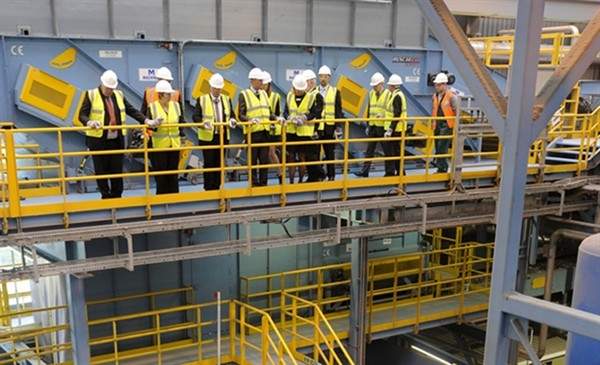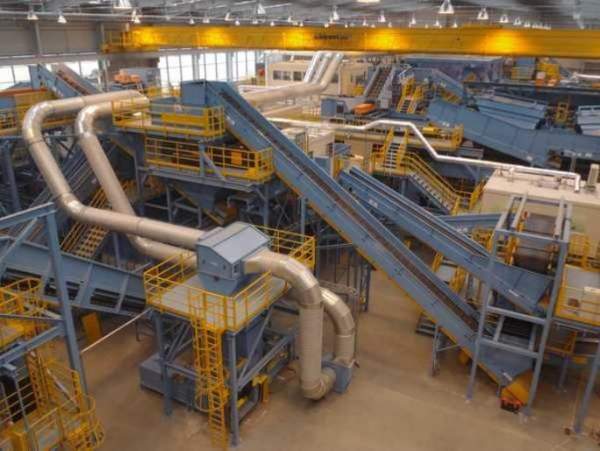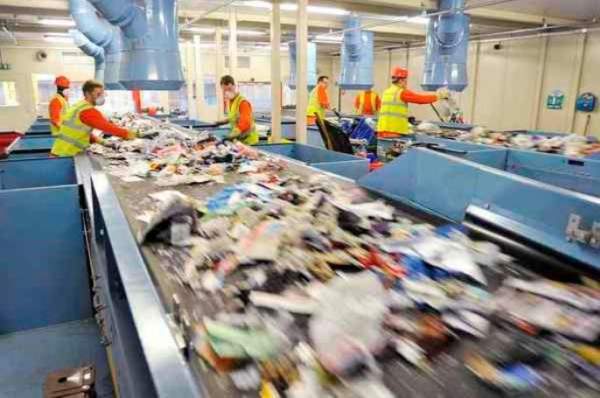UPM, one of the largest recyclers in the UK, opened a state-of-the-art materials recovery facility (MRF) in July 2011. Located adjacent to UPM’s Shotton paper mill in North Wales, UK, the MRF has been built with an investment of £17m. The Welsh Government provided £1.7m for building the facility.
The facility has an annual capacity to process 270,000t of dry recyclables including paper, plastic, metals and glass. It is capable of achieving the highest recovery rates of 99%.
Nearly 120,000t of the recovered material is high quality paper which is directly fed into the Shotton paper mill for paper production. The facility will serve 20% of the Shotton paper mill’s requirements.
UPM built the facility to ensure consistent supply of high quality recovered paper for the Shotton mill. The mill uses nearly 640,000t of recovered paper to produce 500,000t of newsprint annually.
UPM sources most of the recovered paper from MRFs in the UK. The quality of paper produced at the mill directly depends on the quality of the recycled paper.
The demand for high quality recycled paper from UPM’s customers necessitated greater control over the supply chain of recovered paper. UPM, therefore, decided to build the plant to ensure quality and consistency of supply of the recovered paper.
Development of the facility is also in line with UPM’s zero waste to landfill policy and generates additional revenue through the recovery of other recyclables, such as plastics. The Shotton MRF is being supplied with commingled collections from the Rochford, Cheshire East and Warrington boroughs and Denbighshire councils.
Equipment installed at UPM’s MRF
The plant is equipped with two paper lines and a non-paper line to ensure continuous operation. Maintenance work can be carried out on one of the two lines without halting production.
The facility is equipped with ten optical sorting units supplied by Titech. The paper lines are fitted with six sorting units, while the remaining four are fitted to the containers and plastics line.
Other equipment includes a plastic film air-capture system, magnetic separators and disc screen separators. A sensor-only unit for final quality control is also installed.
Process incorpoated at the North Wales facility
Material entering the paper line is first screened and any large and three dimensional items are separated. These items are then graded using mechanical and screening systems.
The next step is passing of these items through four Titech units, which separate cardboard and other contaminants from the paper line. On the non-paper line, an optical system recovers any paper present. The paper is fed back into the paper line.
A sixth Titech system separates smaller material, such as envelopes. After the sorting is completed, the recovered paper goes through a handpicking section, where it is manually checked to ensure no impurities are present.
A final check of the recovered paper is carried out by the sensor unit which prevents any contaminated paper from entering the Shotton mill for processing.
The recovered paper from the facility is directly sent to the Shotton mill through a tunnel, as a result of which it need not be stored. This also enables the mill to operate 24/7. Non-paper material recovered at the plant is sold to reprocessors.
Technology used at the state-of-the-art materials recovery facility
Presence of impurities, such as glass, is a major problem for recyclers such as UPM. Glass can contaminate and damage equipment, thereby decreasing the quality of recycled paper.
To ensure the MRF produces the highest quality of recovered paper, UPM researched several technologies before choosing the sorting units of Titech.
The optical sorting system ensures 99% purity of the recovered paper. The technology is more advanced than the conventional RGB camera-based systems which sort materials only by colour.
For example, when paper and cardboard become damp their appearance changes, leading to misidentification. The RGB camera-based technology can, therefore, lead to contamination and affect the final quality of recovered paper.
Titech’s optical sorting system uses a technology, called NIR spectroscopy, which sorts materials based on their physical properties. This improves accuracy and the quality of recyclables recovered.
Contractors involved
Eric Wright Group was contracted to carry out construction of the facility. Machinex supplied and installed the automated sorting system.
Project management for the facility was undertaken by Christal Construction Management. Civil engineering consultant was Wilde Consulting Engineers. PPS was the technical advisor.






